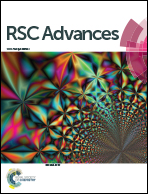Dietary chitosan oligosaccharide supplementation improves foetal survival and reproductive performance in multiparous sows
Abstract
Chitosan oligosaccharide (COS), a partially hydrolysed product of chitosan, has various important biological activities. In the present study, we explored the effects of dietary COS supplementation on the reproductive performance and gene expression of certain biochemical markers in the placenta and foetus of sows. Fifty-two Yorkshire multiparous sows were randomly allocated into two groups after mating (n = 26) and fed either with a corn–soybean basal diet (CON) or the basal diet supplemented with 100 mg kg−1 COS (COS). We show that COS supplementation significantly enhanced (P < 0.05) the foetal survival rate and size (crown-to-rump length) after 35 days of gestation. COS supplementation also significantly elevated (P < 0.05) the number of viable piglets born per litter and the average weights for piglets born alive. Interestingly, COS supplementation not only elevated (P < 0.05) serum leptin and immunoglobulin (IgG, IgA, and IgM) concentrations but also increased (P < 0.05) the total antioxidant capacity (T-AOC) at 35 days of gestation. Moreover, the serum leptin and IgG concentrations were higher (P < 0.05) in COS than in the CON group at 85 days of gestation. Importantly, dietary COS supplementation not only up-regulated (P < 0.05) the expression levels of leptin and VEGFA in the placenta but also elevated (P < 0.05) the expression of critical foetal development-related genes (STAT3, TGF-β, and FGFR2) in the foetus at 35 days of gestation. Collectively, these results furthered our understanding of the mechanisms underlying the beneficial effects of COS on foetal development and reproductive performance in pregnant sows.


 Please wait while we load your content...
Please wait while we load your content...